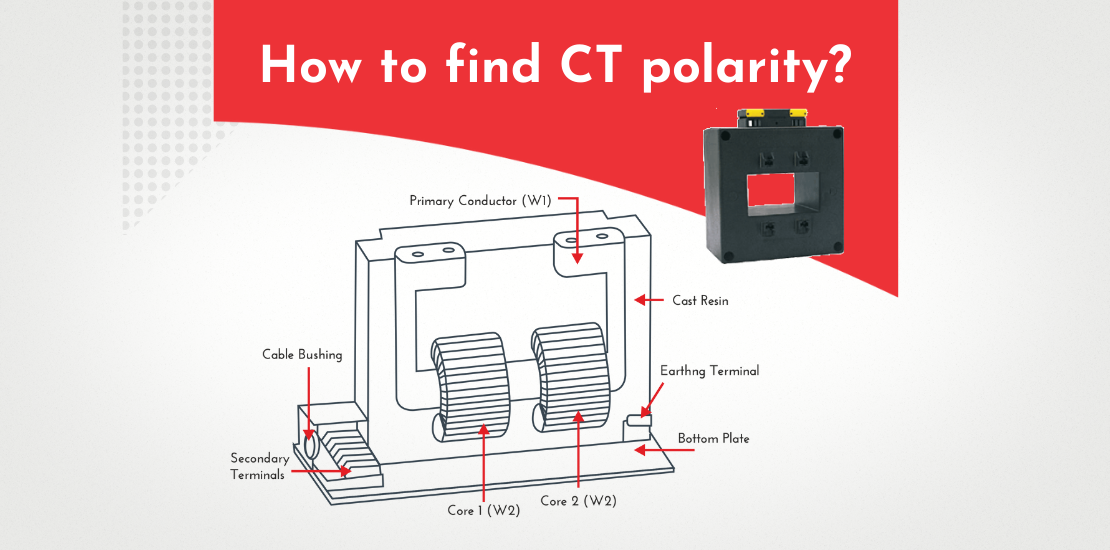- October 28, 2021
- Posted by: Dyaneshwar Nirmale
- Category: Digital Meters

Polarity is a critical concept in the functioning of a current transformer. Polarity can be defined as the direction of current flow in a CT. It is determined by the direction in which the current transformer coils are wound around the current transformer core and the manner in which the secondary leads are brought out of the CT case.
The polarity of a current transformer is denoted with specific markings.
H1 – Primary current, line facing direction
H2 – Primary current, load facing direction
X1 – Secondary current (multi ratio CTs have additional secondary terminals)
There could be instances when the polarity markings on the CT are misinterpreted by the installation personnel, or, in rare cases, they could be printed at the wrong designations on a CT. Hence it is important to check the polarity of a current transformer before installation.
It is absolutely vital to ensure that the polarity connections of a current transformer are correct. Otherwise, it could have serious consequences
Incorrect polarity can cause severe damage and malfunctioning of devices connected to the current transformer. The energy meter will show negative readings and the relay will read the negative current. This will lead the relay to activate the trip circuit. The frequent trips not only result in disturbance and downtime but also damage your equipment and increase costs.
Thus, it is vital for you to check the polarity of the current transformer so that the polarity connections on your CT are correct.
Consider these 5 ways to find out the polarity of your current transformer
Learn the manufacturer’s CTs polarity markings
Normally, CTs are marked as H1 and H2. However, some manufacturers might use the labels P1 for current entering and P2 for the current leaving the CT. Others may label the same with K for the current entering and L for the current leaving. Acquaint yourself with the labels of the manufacturer before installing the current transformer.
Study the direction of the current
After learning the polarity markings on the CT, you could try running the current through the CT. Identify the terminals through which the current enters and leaves the current transformer.
Connect an energy meter to the current transformer
Try connecting an energy meter to the CT. If the meter shows a negative reading, the polarity connection needs to be changed either on the CT side or on the meter side.
Deploy an MOV terminal
Metal Oxide Varister is a device used to protect the circuit from high voltages. It is often used in current transformers to protect from accidents in case a CT is open-circuited. Installing the MOV in the S1 terminal of the CT can help identify the CT polarity.
Connect a battery and voltmeter to the CT
Disconnect all power from the CT. Connect an analog voltmeter to the secondary. The positive terminal of the voltmeter is connected to X1 while the negative terminal is connected to secondary terminal X2. Run a wire through the CT. Next, touch one end of the wire to a 9-volt battery for just a moment. If the polarity is correct, the voltmeter should jump in the positive direction. If it is reversed, the voltmeter should jump in a negative direction.
